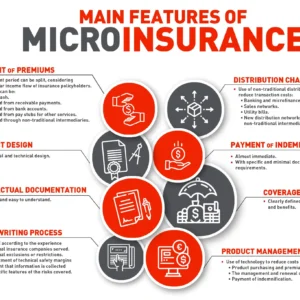
Outline:

1. Introduction
- Overview of Long Term Care Insurance (LTCI)
- Why it’s an important topic to explore
- A glimpse into the pros and cons
2. What is Long Term Care Insurance?
- Definition of LTCI
- Types of care covered under LTCI
- Difference between LTCI and other forms of insurance
3. Why Consider Long Term Care Insurance?
- Understanding the aging population and care needs
- The growing need for LTC due to medical advancements and longevity
- Financial implications of needing long-term care
4. How Does Long Term Care Insurance Work?
- Coverage details (nursing home, in-home care, assisted living)
- Eligibility criteria for LTCI
- Benefits and payouts of LTCI
5. The Pros of Long Term Care Insurance
- Protecting your assets from the cost of long-term care
- Preserving family finances and avoiding burdens on loved ones
- The peace of mind that comes with knowing you’re covered
- Providing choices for care options (home, facility, etc.)
6. The Cons of Long Term Care Insurance
- The cost of premiums and potential price hikes
- Potential gaps in coverage and exclusions
- Complexity of policies and navigating the terms
- The possibility of not needing long-term care and paying for something unused
7. Who Needs Long Term Care Insurance?
- Individuals approaching retirement age
- People with family history of medical conditions needing LTC
- People concerned about Medicaid eligibility
8. How Much Does Long Term Care Insurance Cost?
- Factors that affect LTCI premiums (age, health status, policy type)
- Comparison of pricing for different coverage levels
- Understanding the lifetime cost vs. premium savings
9. When Should You Buy Long Term Care Insurance?
- Best age range to purchase LTCI
- Buying early vs. waiting until later in life
- Considerations for people in their 50s vs. 60s
10. Alternatives to Long Term Care Insurance
- Medicaid as a potential option for long-term care
- Self-funding: using personal savings and assets
- Hybrid policies combining life insurance with long-term care benefits
11. How to Choose the Right Long Term Care Insurance Policy
- Tips for evaluating LTCI policies
- Key features to look for in a policy
- How to balance cost and coverage
12. The Financial Impact of Not Having Long Term Care Insurance
- How long-term care expenses can deplete personal savings
- The risk of financial strain for family members without LTCI
13. Is Long Term Care Insurance Right for You?
- Factors to consider when making a decision
- Personal circumstances that influence the decision to buy LTCI
- The importance of consulting with a financial advisor
14. Conclusion
- Summary of the pros and cons of LTCI
- Final thoughts on whether LTCI is worth the cost
15. FAQs
- What does Long-Term Care Insurance cover?
- Is Long-Term Care Insurance tax-deductible?
- How much does Long-Term Care Insurance cost?
- At what age should I buy Long-Term Care Insurance?
- Can I use Medicaid instead of Long-Term Care Insurance?
READ MORE: Term Insurance vs. Whole Life Insurance: An In-Depth Comparison of Cost, Coverage Duration, Investment Value, and Long-Term Financial Impact
Long-Term Care Insurance: Is It Worth the Cost? A Strategic Analysis of Coverage Benefits, Policy Limitations, and Financial Planning for Aging and Health-Related Risks
Introduction
Long-term care insurance (LTCI) is a type of insurance designed to cover the costs associated with long-term care services, like those provided in nursing homes, assisted living facilities, or even in the comfort of your home. As our life expectancy increases, the need for long-term care services is becoming more prevalent, and more people are asking whether it’s worth purchasing LTCI. In this article, we’ll break down the different aspects of LTCI, discuss its pros and cons, and help you determine if it’s right for you.
What is Long Term Care Insurance?
Long term care insurance is a policy that provides financial support to individuals who need help with daily activities like bathing, eating, dressing, or mobility due to an illness, injury, or age-related condition. It can cover services in various settings, including nursing homes, assisted living, adult day care, or home health care.
Unlike traditional health insurance, LTCI isn’t designed to cover hospital or doctor visits. Instead, it focuses specifically on non-medical services for those who cannot perform daily tasks independently. Some LTCI policies also cover care for chronic conditions like Alzheimer’s or Parkinson’s disease, which require long-term care management.
Why Consider Long Term Care Insurance?
The decision to purchase LTCI is influenced by several factors. First, people are living longer lives thanks to medical advancements, but with longer life spans come an increased risk of requiring long-term care. According to the U.S. Department of Health and Human Services, about 70% of people aged 65 and older will require long-term care services at some point in their lives.
The financial burden of paying for these services out of pocket can be overwhelming. Without insurance, long-term care costs can deplete savings, leaving families financially strained. LTCI provides a safety net, ensuring that individuals receive the necessary care while protecting their assets from being exhausted by high medical costs.
How Does Long Term Care Insurance Work?
LTCI policies vary in their coverage, but in general, they pay for services like:
- In-home care: Nurses, aides, or other professionals providing personal care at home.
- Nursing homes: 24-hour care in facilities for individuals who cannot live independently.
- Assisted living facilities: A residential setting with a mix of personal and medical care.
- Hospice care: End-of-life care for terminally ill patients.
When you purchase a policy, you’ll choose the amount of coverage, the length of time benefits will be paid, and the waiting period before benefits kick in. Your premiums are typically paid monthly, and when you need care, the insurance will cover part or all of the expenses depending on your plan’s details.
The Pros of Long Term Care Insurance
Protecting Your Assets from High Long-Term Care Costs
One of the biggest benefits of LTCI is that it shields your savings from the high costs of long-term care. Without LTCI, many individuals would have to deplete their life savings to afford the care they need, which can result in financial hardship, especially for those who have spent decades saving for retirement.
Preserving Family Finances
LTCI can also ease the financial burden on family members, who may otherwise need to step in to provide care or help with the costs. By having a policy in place, you ensure that your family won’t have to sacrifice their own savings to support your care.
Offering Flexibility in Care Options
LTCI gives policyholders the flexibility to choose where and how they receive care. Many policies cover home health care, so individuals don’t have to leave the comfort of their homes to receive care. This can help maintain independence and improve quality of life.
Providing Peace of Mind
Knowing that you have LTCI provides peace of mind. The knowledge that you are financially protected from high care costs can alleviate stress about the future and give you more confidence as you plan for retirement.
The Cons of Long Term Care Insurance
High Premiums and Price Increases
One of the biggest drawbacks of LTCI is the cost of premiums. Premiums can be expensive, and they often increase over time. The cost is determined by several factors, including your age, health status, and the level of coverage you choose. Many individuals find it difficult to afford LTCI, especially in their younger years when they may not feel they need it yet.
Complexity and Confusing Policies
LTCI policies can be complicated and difficult to navigate. With various options and riders available, it can be challenging to understand which policy offers the best coverage for your needs. Additionally, some policies have exclusions or limitations, making it important to read the fine print.
Waiting Periods and Coverage Gaps
Most LTCI policies have a waiting period, typically 30 to 90 days, before benefits begin. If you need care immediately after being diagnosed with a condition, the waiting period may delay your coverage, leaving you to pay out of pocket. Additionally, some policies may not cover certain types of care, like mental health services, which can leave gaps in coverage.
Risk of Not Using the Insurance
Another concern is the possibility that you may never need long-term care. Many individuals purchase LTCI but never require care, which means they end up paying premiums for a service they never use. This can be frustrating for people who are healthy and may never experience a need for long-term care.
Who Needs Long Term Care Insurance?
LTCI is typically recommended for individuals in their mid-50s to 60s who are approaching retirement age. However, certain factors may influence your need for LTCI:
- Health status: Those with chronic illnesses or a family history of conditions that require long-term care may want to consider purchasing LTCI early.
- Assets: If you have significant assets, you may want LTCI to preserve your wealth from being depleted by long-term care costs.
- Family situation: If you have no children or dependents who can help with care, LTCI may be essential for ensuring you can receive proper care without relying on others.
How Much Does Long Term Care Insurance Cost?
The cost of LTCI varies based on several factors, including:
- Age: The older you are, the higher your premiums will be. Purchasing LTCI in your 50s or 60s will usually result in lower premiums compared to waiting until your 70s.
- Health: Healthier individuals typically pay lower premiums, as they are less likely to require long-term care services.
- Coverage amount: The more coverage you select, the higher your premiums will be. You can adjust the amount of coverage depending on your needs and budget.
- Waiting period: Shorter waiting periods tend to result in higher premiums, while longer waiting periods reduce premiums but delay when your coverage kicks in.
When Should You Buy Long Term Care Insurance?
The best time to purchase LTCI is typically in your 50s or early 60s. At this age, you are likely to be healthy enough to qualify for affordable premiums, but you are also nearing the age when long-term care might become necessary. Waiting too long can result in higher premiums or denial of coverage due to pre-existing conditions.
Alternatives to Long Term Care Insurance
If LTCI is not a viable option for you, consider these alternatives:
- Medicaid: Medicaid is a government program that provides long-term care coverage for individuals who meet certain income and asset requirements. It’s an option for those who cannot afford LTCI or have limited assets.
- Self-funding: Some individuals choose to save and invest money specifically for potential long-term care needs. This strategy requires disciplined saving and planning but can offer flexibility if you don’t need care.
- Hybrid policies: Some life insurance policies offer long-term care riders, allowing you to combine the benefits of life insurance with coverage for long-term care needs. These policies may be a good option for those who want the benefits of both life insurance and LTC coverage.
How to Choose the Right Long Term Care Insurance Policy
Choosing the right LTCI policy requires careful consideration of your needs, budget, and long-term goals. Here are some tips to help you select the best policy:
- Understand your coverage needs: Consider how much care you may need and where you want to receive it. Factor in whether you want home care, facility care, or both.
- Read the fine print: Be sure to understand the exclusions, limitations, and waiting periods of the policy.
- Get quotes: Compare premiums from different providers to find a policy that fits your budget.
- Consider policy riders: Some policies offer add-ons, like inflation protection or a return-of-premium rider, which can provide added value.
The Financial Impact of Not Having Long Term Care Insurance
Without LTCI, the cost of long-term care can be overwhelming. If you need care and don’t have insurance, you may have to rely on your savings, sell assets, or even burden your family members. Long-term care can cost thousands of dollars per month, and without insurance, you risk depleting your financial resources, which could affect your retirement and financial security.
Is Long Term Care Insurance Right for You?
Deciding whether LTCI is right for you depends on your financial situation, health status, and goals. If you have assets you want to protect and want the peace of mind of knowing you can afford long-term care if necessary, LTCI may be a good investment. However, if you have limited assets or are in good health, other options like saving or relying on Medicaid may be more suitable.
READ MORE: Long-Term Care Insurance: Is It Worth the Cost? A Strategic Analysis of Coverage Benefits
Conclusion
Long-term care insurance offers valuable protection against the high costs of long-term care, but it’s not for everyone. Understanding the benefits and drawbacks, as well as your personal financial situation and health status, will help you make an informed decision. Whether or not you choose LTCI, it’s important to have a plan in place for long-term care to ensure that you and your loved ones are prepared for whatever the future may bring.
FAQs
1. What does Long-Term Care Insurance cover?
LTCI covers services such as in-home care, nursing home care, assisted living, and sometimes adult day care. It helps pay for the care needed by individuals who can no longer perform everyday tasks such as bathing, dressing, or eating due to illness, injury, or old age. Policies differ, but most LTCI plans cover personal care services, while some may include home modifications or hospice care.
2. How much does Long-Term Care Insurance cost?
The cost of LTCI depends on several factors, including your age, health, coverage amount, and the type of policy. Typically, the younger and healthier you are when purchasing the insurance, the lower your premiums will be. Expect to pay anywhere from $1,500 to $4,000 annually, but the premiums could increase over time, particularly if you purchase a policy at a later age.
3. Is Long-Term Care Insurance tax-deductible?
In some cases, the premiums you pay for LTCI can be tax-deductible. However, there are limits based on your income and age. For example, the IRS allows individuals to deduct LTCI premiums as part of their medical expenses, but only if the total medical expenses exceed 7.5% of your adjusted gross income. Be sure to consult with a tax professional to understand your eligibility.
4. At what age should I buy Long-Term Care Insurance?
The best time to buy LTCI is typically in your 50s or early 60s when you are healthy and premiums are more affordable. If you wait until your 70s or older, you may face higher premiums or be denied coverage due to pre-existing conditions. Purchasing LTCI earlier ensures lower costs and a higher likelihood of qualifying for the policy.
5. Can I use Medicaid instead of Long-Term Care Insurance?
Medicaid is a government program that provides long-term care services to those with limited income and resources. However, Medicaid is only available to those who meet strict financial eligibility requirements, and it often doesn’t cover the same range of services as LTCI. LTCI allows more flexibility in choosing care options and providers, while Medicaid might require you to rely on state-approved facilities or care options.







